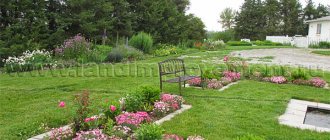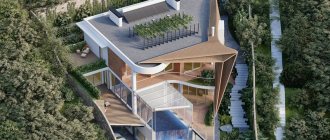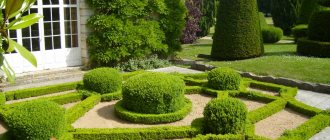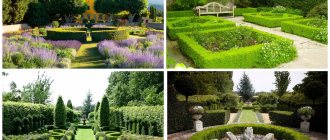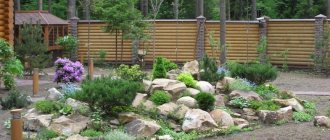Art Nouveau is one of the most elegant and mysterious styles, and it came to the garden from the interior. The Art Nouveau style that emerged at the beginning of the 20th century had such a strong influence on culture as a whole that it simply could not help but manifest itself in garden design. The main highlight of the Art Nouveau style is the line. Art Nouveau lines are smooth, fluid, bewitching, arched. They seem to flow into themselves.
The style is not the simplest, since here, like nowhere else, the connections between the zones and the garden with the house must be perfect. A well-executed garden in this style is like music. There is something in it from a Japanese garden: the same elegance, meaningfulness. A plot in the Art Nouveau style is mainly decorative, but, despite its apparent simplicity, it requires careful maintenance. The optimal plot is of medium and large size - from 10 acres, the shape is best complex, irregular. The area should not be too dry.
History of appearance
“Everything flows, everything changes,” said the ancient philosopher. This happens in all spheres of human activity, including landscape design. This direction of arrangement of the territory adjacent to residential buildings was formed during the formation of ancient architecture: each village designed the territory surrounding it according to its worldview and taking into account the terrain.
Over time, the technical capabilities of society and its aesthetic perception of the surrounding world developed. So, at the turn of the XIX-XX centuries. Modernism replaced classicism, baroque and other areas of space arrangement.
This is the name of the style in the Slavic world, in Western European countries, for example, it sounds (translated into Russian) as “new style”. This is true from the point of view of its isolation in design, but it is more correct for it to have its own name - modern. After all, it also uses fragments of other styles. For example, the lawn may be English or Moorish; The flower garden can be arranged in the form of a ridge or border, etc.
The emergence of modernity is due to a number of objective factors:
- Scientific and technological progress. Held in Europe and the USA in the second half of the 19th century. The industrial revolution gave impetus not only to various industries, but also affected all aspects of society. Old (natural) materials began to be replaced by new ones (concrete, cement, building mixtures, rubber, etc.). Accordingly, we had to look for areas of application for them, including in landscape design.
- Desire to innovate. In the aesthetic perception of the world, humanity was moving towards minimalism. The old style assumed a spirit of philistinism in design: the interior contained an abundance of furniture, many excesses (carpets, heavy curtains, etc. accessories). A lot of stucco and works of sculptural art were used in the arrangement of garden and park areas.
- Geopolitical situation. At that time, the number of military conflicts in Europe had decreased significantly, and the need for the construction of dual-use (military-civilian) facilities had also decreased. Previously, construction gravitated toward massive walls and narrow windows in buildings, and linearity in landscape design. The “new style” presupposes lightness of forms and harmonious curvilinearity in the planning of garden and park ensembles.
Read
